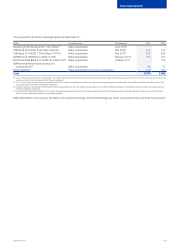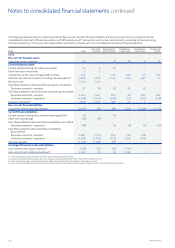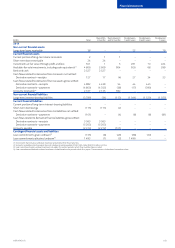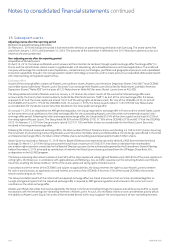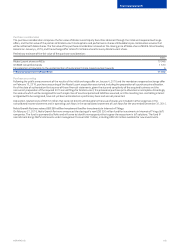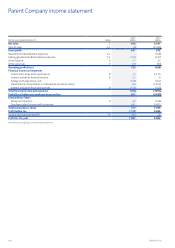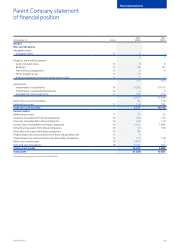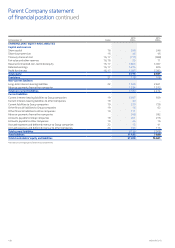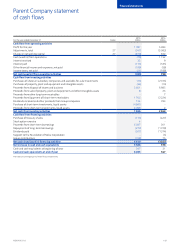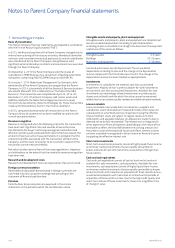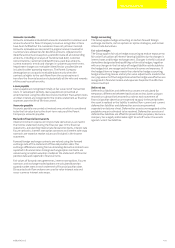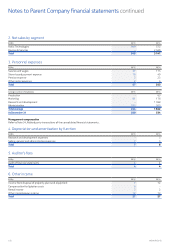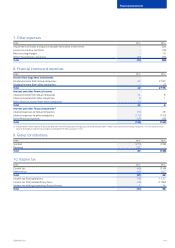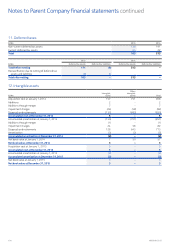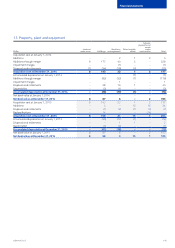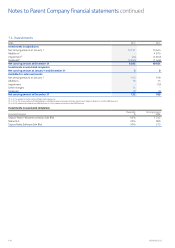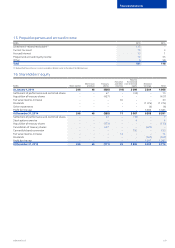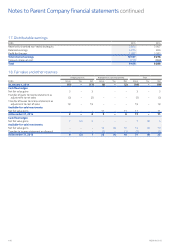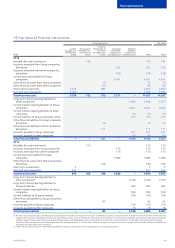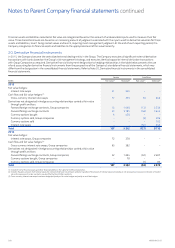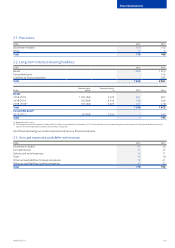Nokia 2015 Annual Report Download - page 193
Download and view the complete annual report
Please find page 193 of the 2015 Nokia annual report below. You can navigate through the pages in the report by either clicking on the pages listed below, or by using the keyword search tool below to find specific information within the annual report.
191
Financial statements
NOKIA IN 2015
Accounts receivable
Accounts receivable include both amounts invoiced to customers and
amounts where the Parent Company’s revenue recognition criteria
have been fullled but the customers have not yet been invoiced.
Accounts receivable are carried at the original amount invoiced to
customers less allowances for doubtful accounts. Allowances for
doubtful accounts are based on a periodic review of all outstanding
amounts, including an analysis of historical bad debt, customer
concentrations, customer creditworthiness, past due amounts,
current economic trends and changes in customer payment terms.
Impairment charges on receivables identied as uncollectible are
included in other operating expenses. The Parent Company
derecognizes an accounts receivable balance only when the
contractual rights to the cash ows from the asset expire or it
transfers the nancial asset and substantially all the risks and rewards
of the asset to another entity.
Loans payable
Loans payable are recognized initially at fair value net of transaction
costs. In subsequent periods, loans payable are presented at
amortized cost using the eective interest method. Transaction costs
and loan interest are recognized in the income statement as nancial
expenses over the life of the instrument.
Accounts payable
Accounts payable are carried at invoiced amount which is considered
to be the fair value due to the short-term nature of the Parent
Company’s accounts payable.
Derivative nancial instruments
Interest income or expense on interest rate derivatives is accrued in
the income statement during the nancial year. In the nancial
statements, outstanding interest rate forward contracts, interest rate
future contracts, interest rate option contracts and interest rate swap
contracts are stated at market values and included in the income
statement.
Forward foreign exchange contracts are valued using the forward
exchange rate of the statement of nancial position date. The
exchange dierences arising from outstanding derivative contracts are
reported in nancial items. Foreign exchange option contracts are
valued using an option valuation model on the statement of nancial
position date and reported in nancial items.
Fair values of forward rate agreements, interest rate options, futures
contracts and exchange traded options are calculated based on
quoted market rates at each statement of nancial position date.
Discounted cash ow analyses are used to value interest rate and
cross-currency interest rate swaps.
Hedge accounting
The Group applies hedge accounting on certain forward foreign
exchange contracts, certain options or option strategies, and certain
interest rate derivatives.
Fair value hedges
The Group applies fair value hedge accounting to reduce exposure to
fair value uctuations of interest-bearing liabilities due to changes in
interest rates and foreign exchange rates. Changes in the fair value of
derivatives designated and qualifying as fair value hedges, together
with any changes in the fair value of hedged liabilities attributable to
the hedged risk, are recognized in nancial income and expenses. If
the hedged item no longer meets the criteria for hedge accounting,
hedge accounting ceases and any fair value adjustments made to the
carrying amount of the hedged item while the hedge was eective are
recognized in nancial income and expenses based on the eective
interest method.
Deferred tax
Deferred tax liabilities and deferred tax assets are calculated for
temporary dierences between book values and tax bases using an
enacted or substantively enacted tax rate at each statement of
nancial position date that are expected to apply in the period when
the asset is realized or the liability is settled. Non-current and current
deferred tax liabilities and deferred tax assets are presented
separately on balance sheet. Deferred tax assets are recognized at the
probable amount estimated to be received. Deferred tax assets and
deferred tax liabilities are oset for presentation purposes, because a
company has a legally enforceable right to set o current tax assets
against current tax liabilities.


